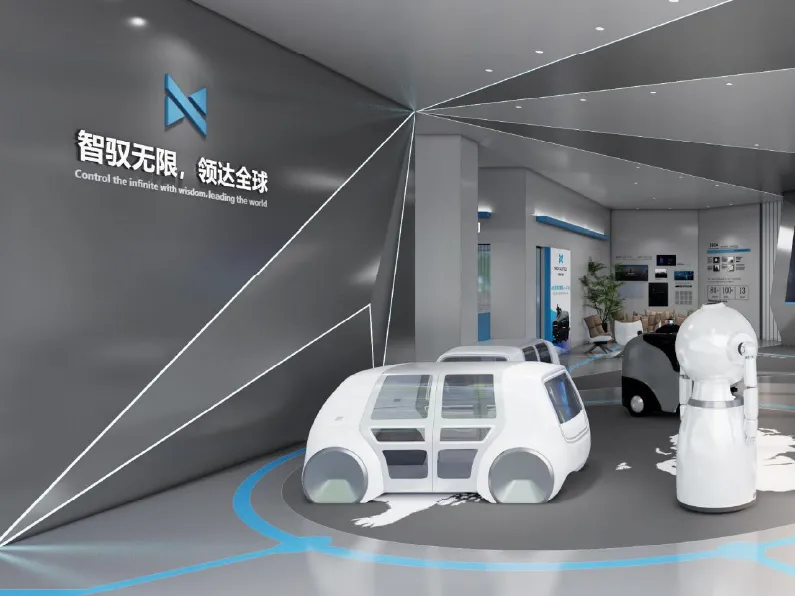Revolutionizing Supply Chain Operations with Autonomous Transport Solutions
The landscape of modern supply chain management is undergoing a dramatic transformation, with transport robots emerging as game-changing technology that's reshaping how materials and goods move through facilities. These intelligent machines are proving instrumental in optimizing workflows, reducing operational costs, and maintaining consistency in supply chain operations. As businesses face increasing pressure to improve efficiency and meet growing consumer demands, transport robots are becoming an indispensable asset in warehouses, manufacturing plants, and distribution centers worldwide.
The integration of transport robots represents more than just automation – it signifies a fundamental shift in how supply chains function. These sophisticated systems combine advanced navigation, artificial intelligence, and precision engineering to create seamless material flows that traditional manual methods simply cannot match. The impact extends beyond mere transportation, influencing everything from inventory management to worker safety and operational scalability.
Core Capabilities of Modern Transport Robots
Autonomous Navigation and Mapping
Today's transport robots utilize cutting-edge navigation systems that enable them to move confidently through complex warehouse environments. Using a combination of sensors, cameras, and sophisticated mapping software, these robots create detailed facility maps and continuously update their understanding of the space around them. This advanced spatial awareness allows them to navigate around obstacles, adjust routes in real-time, and operate safely alongside human workers.
The mapping capabilities of transport robots extend to dynamic environments where layouts frequently change. Through constant environmental scanning and updates, these systems maintain optimal routing efficiency even as warehouse configurations evolve. This adaptability ensures consistent performance regardless of facility modifications or seasonal changes in inventory arrangement.
Load Handling and Material Transport
Transport robots excel in handling diverse load types and sizes, thanks to their versatile design and sophisticated load management systems. These machines can safely transport everything from individual items to full pallets, adjusting their approach based on the cargo's characteristics. Advanced weight distribution algorithms and stability control systems ensure secure movement of materials, reducing the risk of damage or accidents.
The precision of robotic transport systems extends to their loading and unloading capabilities. Many models feature automated lifting mechanisms, conveyor interfaces, and specialized attachment options that enable seamless integration with existing warehouse infrastructure. This versatility makes them invaluable across various industries, from automotive manufacturing to pharmaceutical distribution.

Operational Benefits in Supply Chain Management
Enhanced Throughput and Efficiency
The implementation of transport robots leads to significant improvements in supply chain throughput. These systems operate continuously without fatigue, maintaining consistent performance levels throughout extended operating hours. Unlike human operators, robots can work around the clock, requiring only brief charging periods and minimal maintenance downtime. This continuous operation capability translates into higher material movement rates and improved overall facility productivity.
Transport robots also optimize route planning and execution, choosing the most efficient paths between pickup and delivery points. Their ability to communicate with warehouse management systems enables real-time load prioritization and dynamic task allocation, ensuring that critical movements are handled promptly while maintaining optimal workflow balance across the facility.
Error Reduction and Quality Control
One of the most significant advantages of automated transport systems is their ability to virtually eliminate human error in material movement operations. Transport robots follow precise protocols and maintain accurate tracking of every movement, ensuring that materials consistently reach their intended destinations. This precision reduces costly mistakes, such as misplaced inventory or incorrect deliveries, that can disrupt supply chain operations.
The advanced tracking capabilities of transport robots also contribute to improved inventory accuracy and traceability. Each movement is logged and recorded, creating a detailed audit trail that aids in quality control and compliance requirements. This enhanced visibility into material flow patterns helps identify bottlenecks and optimize supply chain processes.
Integration and Implementation Strategies
System Planning and Infrastructure Requirements
Successful deployment of transport robots requires careful consideration of existing infrastructure and operational requirements. Facilities must assess factors such as floor conditions, aisle widths, and charging station placement to ensure optimal robot performance. Additionally, wireless network coverage and system integration capabilities need evaluation to support seamless communication between robots and warehouse management systems.
The planning phase should also include a detailed analysis of traffic patterns, peak load requirements, and potential bottleneck areas. This information helps determine the optimal number of robots needed and guides the development of efficient routing strategies. Proper planning ensures that the implemented system can handle both current demands and future growth requirements.
Staff Training and Change Management
While transport robots automate many manual tasks, successful implementation depends heavily on proper staff training and change management. Employees need to understand how to interact with the robots, manage system interfaces, and respond to various operational scenarios. Comprehensive training programs should cover both routine operations and emergency procedures.
Change management strategies should address potential concerns about job displacement and emphasize how automation creates opportunities for workers to focus on higher-value tasks. Success stories and demonstrated benefits help build staff buy-in and facilitate smooth transition to the new operational model.
Future Trends and Evolution
Advanced AI and Machine Learning Integration
The future of transport robots lies in increasingly sophisticated AI and machine learning capabilities. These technologies will enable robots to better predict maintenance needs, optimize routing based on historical patterns, and adapt to changing operational conditions automatically. Enhanced learning algorithms will improve collision avoidance and enable more complex interactions with human workers.
Machine learning will also drive improvements in load handling capabilities, allowing robots to better assess and adapt to different package types and weights. This evolution will expand the range of applications for transport robots across various industries and operational environments.
Inter-Robot Collaboration and Swarm Intelligence
Emerging developments in robot communication and coordination will enable more sophisticated collaborative behaviors between multiple units. Swarm intelligence allows groups of transport robots to work together more effectively, sharing tasks and adapting to changing priorities in real-time. This advanced coordination reduces congestion and improves overall system efficiency.
The integration of swarm technology with existing warehouse systems will create more resilient and adaptable material handling solutions. These improvements will further enhance the value proposition of transport robots in supply chain operations.
Frequently Asked Questions
What maintenance requirements do transport robots have?
Transport robots require regular maintenance checks, including battery system inspections, sensor cleaning, and software updates. Most modern systems feature predictive maintenance capabilities that alert operators to potential issues before they cause operational disruptions. Typical maintenance intervals vary by manufacturer and usage patterns, but generally require less downtime than traditional material handling equipment.
How long does it take to implement a transport robot system?
Implementation timeframes vary based on facility size and complexity but typically range from several weeks to a few months. This includes initial assessment, infrastructure preparation, system installation, testing, and staff training. Many manufacturers offer phased implementation approaches to minimize operational disruption during the transition period.
Can transport robots work alongside human employees safely?
Yes, modern transport robots are designed with multiple safety features including advanced sensors, emergency stops, and sophisticated obstacle detection systems. They operate at controlled speeds in human-occupied areas and maintain safe distances from workers. Many systems also include visual and audible warnings to alert nearby personnel of their presence and intended movements.

